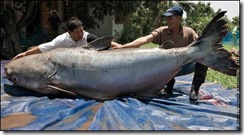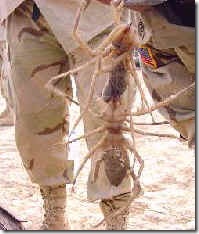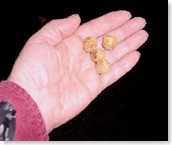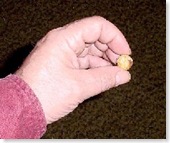
Eris, the largest dwarf planet known, was discovered in an ongoing survey at Palomar Observatory's Samuel Oschin telescope by astronomers Mike Brown (Caltech), Chad Trujillo (Gemini Observatory), and David Rabinowitz (Yale University). We officially suggested the name on 6 September 2006, and it was accepted and announced on 13 September 2006. In Greek mythology, Eris is the goddess of warfare and strife. She stirs up jealousy and envy to cause fighting and anger among men. At the wedding of Peleus and Thetis, the parents of the Greek hero Achilles, all the gods with the exception of Eris were invited, and, enraged at her exclusion, she spitefully caused a quarrel among the goddesses that led to the Trojan war. In the astronomical world, Eris stirred up a great deal of trouble among the international astronomical community when the question of its proper designation led to a raucous meeting of the IAU in Prague. At the end of the conference, IAU members voted to demote Pluto and Eris to dwarf-planet status, leaving the solar system with only eight planets.
The satellite of Eris has received the offical name Dysnomia, who in Greek mythology is Eris' daughter and the demon spirit of lawlessness. As Dysnomia is a bit of a mouthful, we tend to simply call the satellite Dy, for short.
As promised for the past year, the name Xena (and satellite Gabrielle) were simply placeholders while awaiting the IAU's decision on how an official name was to be proposed. As that process dragged on, however, many people got to know Xena and Gabrielle as the real names of these objects and are sad to see them change. We admit to some sadness ourselves.We used the names for almost two years now and are having a hard time swtiching. But for those who miss Xena, look for the obvious nod in the new name of the moon of Eris.
What is it?
This new dwarf planet (see the now out of date "What makes a planet?" below) is the largest object found in orbit around the sun since the discovery of Neptune and its moon Triton in 1846. It is larger than Pluto, discovered in 1930. Like Pluto, the new dwarf planet is a member of the Kuiper belt, a swarm of icy bodies beyond Neptune in orbit around the sun. Until this discovery Pluto was frequently described as "the largest Kuiper belt object" in addition to being a dwarf planet. Pluto is now the second largest Kuiper belt object, while this is the largest currently known.
Where is it?
The dwarf planet is the most distant object ever seen in orbit around the sun, even more distant than Sedna, the planetoid discovered almost 2 years ago. It is almost 10 billion miles from the sun and more than 3 times more distant than the next closest planet, Pluto and takes more than twice as long to orbit the sun as Pluto.

The dwarf planet can be seen using very high-end amateur equipment, but you need to know where to look. The best way to find precise coordinates (of this planet, or any other body in the solar system) is with JPL's horizons system. Click on "select target" and then enter "2003 UB313" under small bodies.
The orbit of the new dwarf planet is even more eccentric than that of Pluto. Pluto moves from 30 to 50 times the sun-earth distance over its 250 year orbit, while the new planet moves from 38 to 97 times the sun-earth distance over its 560 year orbit.
How big is it?
Usually when we first discover distant objects in the outer solar system we don't know for sure how large they are. Why not? Because all we see is a dot of light, like the picture at the top of the page. This dot of light is sunlight reflected off the surface of the planet (interestingly the sunlight takes almost a day to get out to the planet, reflect off of it, and get back to the earth!), but we don't know if the object is bright because it is large or if it is bright because it is highly reflective or both.
When an object is too far away to directly see how big it is, astronomers use an indirect method instead where they measure the heat coming from the object. If we wanted to measure the size of a fire, for example, we could do it by measuring the total amount of heat coming from the fire. The temperature of the flames in a match and a bonfire are essentially the same, but a bonfire emits much more heat because it is much bigger. The same is true of distant planets. Because we know how far away the planet is we have a pretty good idea of the surface temperature (a frosty 405 degrees below zero!), thus when we measure the total heat we can tell how big the object is. Unfortunately, the new planet is so far away and so cold that our first attempt at measuring the heat, using the Spitzer Space Telescope, could not detect the heat output. This fact tells us that the object must be smaller than about 3300 km.
In the meantime, observations have been made by a group from the University of Bonn from the 30-meter IRAM telescope. This telescope, like Spitzer, measures the heat output. IRAM measures the heat output in a region of the spectrum where much less heat is given off, but IRAM is a much larger telescope than Spitzer. The observations were successful in finally detecting the heat of Eris. From the amount of heat measured they determined that Eris has a diameter of 3000 +/- 400 km. A very nice discussion of the measurement and what the uncertainties mean can be found at the press release web page.
The newest size measurement comes from the Hubble Space Telescope. While for most telescopes the planet is too small to be seen as anything other than a dot of light, HST can (just barely) directly measure how big across it is. The measurement is extremely hard, however, even for HST, because even HST distorts light a little bit as it goes through the telescope, and we needed to be sure that we were measuring the actual size of the planet, rather than being fooled by distortion. So we waited until Eris was very close to a star and then snapped a series of 28 pictures and carefully went back and forth comparing the star and the planet. In the end, we determined that Eris t is 2400 +/- 100 km across.
 Crocodiles reports the maximum biting power which is more than 2500 pounds where Humans biting power is only around 127 pounds. These incredible species has the maximum biting power to hold the pray and to rotate vertically till prays death.
Crocodiles reports the maximum biting power which is more than 2500 pounds where Humans biting power is only around 127 pounds. These incredible species has the maximum biting power to hold the pray and to rotate vertically till prays death.












